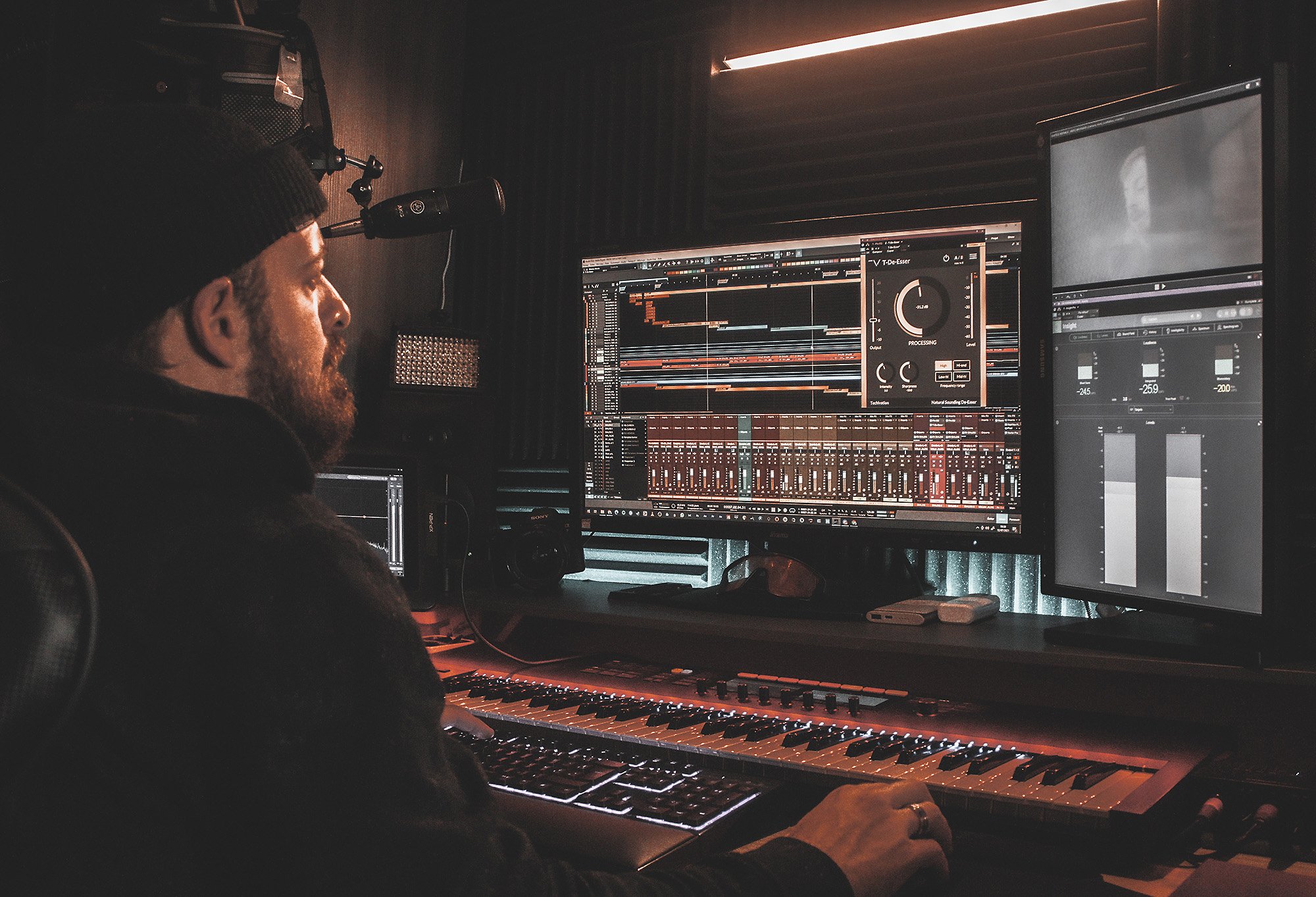How to find space for the vocals to sit in a mix
We picked the brains of 4 leading mix engineers - Matt Sim (Nafla, Tia Ray), to get the inside word on how they carve out space for the all-important vocals to sit perfectly in a mix.
Since 2015 Matt Sim has mixed over a thousand songs spanning all genres for artists such as Jojo Siwa, Jackson Wang, PH-1, Nafla, Tia Ray, Theo Croker, GEM, and Dee Dee Bridgewater.
Before any attempt to carve out space for vocals, I’ll first analyze if the production is on point. Usually, I’ll do that by listening to the rough mix, if provided, or I’ll do a quick mix with level and panning and see if there are any issues in the production that cover up the vocals.
For example, the tone of the drum, bass, and vocals or the recording quality is often off, and no EQ can fix it. Another arrangement issue would be when all the instruments play around a similar note (frequency range).
In the scenarios above, I’ll have to ‘fix’ the production by re-amping some instruments or doing some sample replacement to make the production work for the mix.
Once the production issues are dealt with, I’ll ensure I have the balance and panning set correctly. Then I’ll dial in the perfect vocal tone with EQ and compression.
Afterward, I’ll do a thorough clean-up on the instruments ‘problematic frequency’, making sure that nothing is boomy, ringing, or harsh.
At this point, your vocals should sit quite well in the mix already. I’ll double-check the EQ on the instruments that share the same panning position as the lead vocal and carve out more frequency space for the lead vocal if needed.
Lastly, make good use of stereo widening and time-based effects (reverb and delays) to make the vocals feel more prominent than they appear to be without being too loud in the mix.
Mix engineer Joe Visciano has mixed tracks for Lil Nas X, Sza, Action Bronson, Earl Sweatshirt, SYML, and Lake Street Dive.
The best way to get a vocal to sit in a mix is to work around it, making space for it. If you're having to do a lot with the vocal to get it to sit, your problem most likely isn't the vocal; it's within the rest of the track.
EQ'ing is everything to me. It's essential in figuring out how all the pieces of the puzzle fit together. I spend a lot of time with the instrumental, notching out problem frequencies that live around the vocal range. This inherently will make space for a vocal to sit.
Mixing on Auratones also really helps me focus on conflicts within that range.
That said, when a great voice and a great production come in, I don't have to think about sitting the vocal in at all. It slots in automatically, and I just make sure nothing I'm doing is getting in the way.
Part of being a mixer is getting to see which production techniques work and which don't. Producing around the vocal and paying attention to frequency conflicts within the song separates a good production from a great production.
Four-time Grammy-nominated songwriter, producer, mixing, and mastering engineer Rob Kleiner’s collaborations can be heard on music by artists such as Sia, Labrinth, and Foxy Shazam.
The process of finding space for a vocal in a mix starts with the vocal recording itself. The performance and the recording need to be something worth pushing to the front. Hopefully, the artist and producer have done their job here.
When I start on a mix, I keep the vocals muted. I begin with the rhythm section, then work my way through the rest. All the while, I keep the vocal in mind.
Sometimes I'm unmuting and referencing the vocal to understand where it will live in the mix. When the musical foundation feels right, it's then time to work on the vocal solo. Before it sounds excellent in the mix, it should sound great on its own.
When I eventually marry the vocals and music, EQ and compression are the salt and pepper here. These days you can also do amazing things with dynamic EQ and side-chaining.
I'm also a big fan of resonance suppression and enhancement in the later stages of a vocal mix.
Technique and tools aside, it's most important to have trustworthy ears making these decisions.
Steve Marcantonio has worked with artists of the caliber of Taylor Swift, John Lennon, Steven Tyler, Kiss, Heart, Ronnie Dunn, Keith Urban, and Reba McEntire.
I was quoted years ago that in Country music, the vocal is the most crucial thing in a mix. That's true nowadays in all genres.
I will listen to the song I'm mixing and learn what it's all about. Besides all of the instruments in the mix, I'll listen to the vocal and figure out how I will fit it in.
I duplicate the vocal about three or four times to set up delays and reverbs. I might also treat one or two of those duplicates with different EQs depending on what I need.
If the verses are low in key and level, I'll treat one of those duplicates with a brighter sounding EQ and maybe ride it during those verses.
Then in the choruses, I might want to smooth out some of the more harsh EQs.

